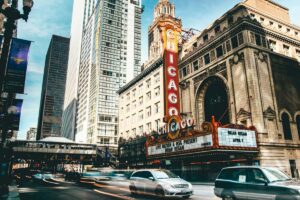
12 Ways to Help Prevent Bedsores
Bedsores can lead to severe complications, especially for those with limited mobility. As a law firm specializing in bedsore-related cases, Traction Law Group understands the importance of prevention when it comes to these painful and often severe skin injuries. As part of our commitment to supporting our clients and community, we provide valuable information on preventive strategies to reduce the risk of bedsores. By understanding and applying these measures, individuals can work to prevent pressure ulcers and related life-threatening health issues.
Frequent Position Changes to Prevent Bedsores
Pressure ulcers typically result from prolonged pressure on specific body areas. Regularly changing positions can help alleviate this pressure and reduce the risk of ulcers. If someone’s mobility is limited, they may need assistance from a caregiver or healthcare provider to adjust their position.
Utilization of Special Support Surfaces
Particular mattresses, overlays, and cushions are designed to distribute body weight evenly and can help prevent bedsores by relieving pressure on susceptible areas. Consulting with a healthcare provider can guide you to the most suitable option.
Maintaining Proper Nutrition and Hydration
A balanced diet rich in protein, vitamins, and minerals supports overall skin health and aids in wound healing. Staying well-hydrated is also crucial. For personalized advice on nutrition and hydration, consider consulting with a healthcare provider or a dietitian.
Consistent Skincare Routine
Keeping the skin clean and dry is critical to preventing pressure ulcers. Using gentle cleansers and moisturizing can help maintain skin integrity and avoid dryness that makes the skin more susceptible to pressure ulcers. Changing wet clothing and bedding on time is crucial to maintaining a healthy skin environment.
Regular Skin Checks
Frequent skin checks can help identify early signs of pressure ulcers, such as redness or swelling. Pay close attention to high-pressure areas like the heels, hips, and buttocks. Early detection allows for prompt intervention and can prevent the progression of bedsores.
Utilization of Assistive Devices
Assistive devices such as lifting aids can make movement and repositioning easier for those with limited mobility, reducing the risk of pressure ulcers. A healthcare provider can recommend suitable devices based on individual needs and circumstances.
Regular Medical Consultations
Routine medical check-ups can help identify health issues that increase the risk of pressure ulcers, such as nerve damage or circulatory problems. Your healthcare provider can advise on the frequency of these check-ups based on your health status.
Wearing Comfortable Clothing
Loose and comfortable clothing can help prevent skin irritation that could lead to pressure ulcers. Clothing made from natural, breathable fabrics can contribute to maintaining healthy skin.
Maintaining a Healthy Body Weight
Keeping a healthy body weight can decrease the pressure on the skin, especially when lying or sitting for long periods. A healthcare provider or dietitian can guide you on maintaining a healthy weight.
Smoking Cessation
If you smoke, consider getting help to quit. Smoking can decrease blood flow to the skin, making the skin more susceptible to pressure ulcers. Your healthcare provider can recommend strategies or treatments to help you stop smoking.
Physical Activity
Try to engage in regular physical activity. Exercise can improve blood flow, crucial for maintaining healthy skin and preventing pressure ulcers. Always consult with a healthcare provider before starting any new exercise routine.
Education
Understanding the causes and prevention strategies for bedsores can significantly reduce their occurrence. Educational resources are available online, or you can consult healthcare providers for more personalized information.
Preventing pressure ulcers is crucial to maintaining health and well-being for those at risk. Adhering to these guidelines, including regular repositioning, use of pressure-relieving support surfaces, maintaining a healthy diet and skincare routine, regular skin checks, use of assistive devices, regular medical consultations, wearing comfortable clothing, holding a healthy body weight, smoking cessation, engaging in physical activity, and seeking education about bedsores, can significantly reduce the risk of pressure ulcers.
At Traction Law Group, our commitment extends beyond legal support. We aim to provide valuable health education to our clients and the community. We are ready to provide assistance and guidance if you have concerns about pressure ulcers, whether from a prevention or legal standpoint.







